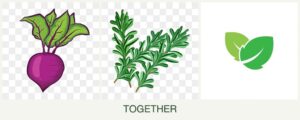
Can you plant tomatoes, lettuce and nasturtiums together?
Can You Plant Tomatoes, Lettuce, and Nasturtiums Together?
Companion planting is a popular gardening technique where certain plants are grown together to enhance growth, improve flavor, and deter pests. Gardeners often wonder if tomatoes, lettuce, and nasturtiums can be planted together. This article explores their compatibility, benefits, challenges, and best practices for growing these plants in harmony.
Compatibility Analysis
Yes, you can plant tomatoes, lettuce, and nasturtiums together. These plants are compatible because they complement each other’s growth requirements and offer mutual benefits. Tomatoes thrive in full sun, while lettuce can tolerate some shade, making them good companions. Nasturtiums not only add beauty but also act as a trap crop for aphids, protecting tomatoes and lettuce. Key factors such as growth requirements, pest control, nutrient needs, and spacing are crucial for successful companion planting.
Growing Requirements Comparison Table
| Plant | Sunlight Needs | Water Requirements | Soil pH & Type | Hardiness Zones | Spacing Requirements | Growth Habit |
|---|---|---|---|---|---|---|
| Tomatoes | Full sun | Moderate | 6.0-6.8, well-drained | 3-10 | 18-24 inches | Upright, 3-6 feet |
| Lettuce | Partial shade | High | 6.0-7.0, loose, fertile | 4-9 | 6-12 inches | Low, 6-12 inches |
| Nasturtiums | Full sun | Low to moderate | 6.1-7.8, well-drained | 9-11 (annual) | 10-12 inches | Trailing, 1-2 feet |
Benefits of Planting Together
Planting tomatoes, lettuce, and nasturtiums together offers several advantages. Nasturtiums repel pests like aphids and whiteflies, reducing the need for chemical pesticides. Lettuce can benefit from the shade provided by taller tomato plants, preventing bolting in hot weather. This combination also maximizes space efficiency in smaller gardens. Additionally, nasturtiums attract pollinators, enhancing the yield of tomatoes.
Potential Challenges
While these plants can be grown together, there are potential challenges. Tomatoes and lettuce have different water needs, with lettuce requiring more frequent watering. Competition for nutrients can occur if the soil is not properly managed. Disease susceptibility, such as fungal infections, may increase in crowded conditions. To overcome these issues, ensure adequate spacing, monitor watering, and practice crop rotation.
Planting Tips & Best Practices
- Optimal Spacing: Space tomatoes 18-24 inches apart, lettuce 6-12 inches, and nasturtiums 10-12 inches.
- Timing: Plant after the last frost date. Lettuce can be sown earlier as it tolerates cooler temperatures.
- Container vs. Garden Bed: Use deep containers for tomatoes; lettuce and nasturtiums can thrive in shallower pots.
- Soil Preparation: Enrich soil with organic compost to support nutrient needs.
- Additional Companions: Basil and marigolds also pair well with this trio, offering additional pest control and flavor enhancement.
FAQ Section
-
Can you plant tomatoes and lettuce in the same pot?
- Yes, but ensure the pot is large enough to accommodate both plants’ root systems.
-
How far apart should these plants be planted?
- Tomatoes: 18-24 inches, Lettuce: 6-12 inches, Nasturtiums: 10-12 inches.
-
Do tomatoes and lettuce need the same amount of water?
- No, lettuce requires more frequent watering than tomatoes.
-
What should not be planted with tomatoes, lettuce, and nasturtiums?
- Avoid planting tomatoes with potatoes or fennel, which can inhibit growth.
-
Will nasturtiums affect the taste of tomatoes or lettuce?
- No, nasturtiums do not affect the taste but enhance pest control.
-
When is the best time to plant these together?
- Plant after the last frost, with lettuce sown slightly earlier in cooler weather.
By understanding the compatibility and requirements of tomatoes, lettuce, and nasturtiums, gardeners can enjoy a thriving, pest-resistant vegetable and herb garden. With careful planning and attention to detail, these plants can be successfully grown together, enriching your gardening experience.



Leave a Reply